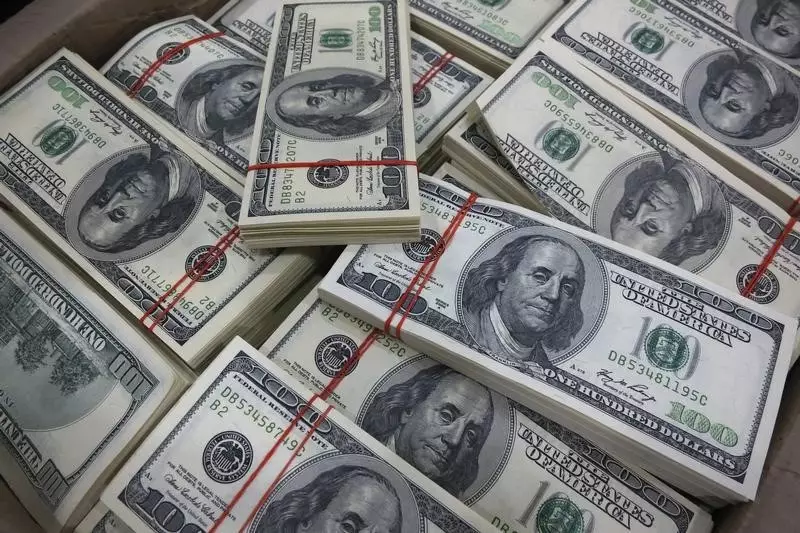As financial markets continue to navigate complex economic landscapes, the fluctuations in currency values provide a compelling window into the broader financial picture. Recently, the US dollar experienced a brief decline but remains poised for a noteworthy weekly performance. Analysts attribute this strength to expectations surrounding economic resilience in the United States and projections indicating limited Federal Reserve rate cuts for the remainder of the year. This article delves into current trends, economic performance indicators, and anticipated monetary policy changes influencing the US dollar’s trajectory.
Despite the dollar’s recent retreat, several robust economic indicators highlight a potential upward trajectory for the US economy. Notably, data from S&P Global revealed unexpectedly strong manufacturing activity for December, bolstering confidence among investors. This sets the stage for the subsequent Institute for Supply Management (ISM) report, which is eagerly anticipated in the coming sessions. Although the ISM manufacturing index is predicted to show a slight contraction—falling from 48.4 to 48.2—the figure remains above the critical threshold of 42.5 signifying broader economic expansion. This resilience is critical, as it suggests that while the manufacturing sector faces challenges, it maintains the foundational strength that could propel economic growth.
Furthermore, as traders assess the landscape, expectations about the Federal Reserve’s monetary policies loom large. The current market sentiment suggests that traders foresee a pause in interest rate adjustments for January, reinforcing the dollar’s position against other currencies. Analysts point out that the Federal Reserve’s “dot plot,” an essential guide for interest rate expectations, sets a high bar for any data surprise that might undermine the dollar’s competitive edge. In short, the expectations of fewer rate cuts play a significant role in bolstering the dollar’s value.
In juxtaposition, the Euro faces struggles, witnessing a slight recovery against the dollar but remains stigmatized by disappointing economic performance. The recent data indicating a lesser-than-expected increase in unemployment in Germany provided a momentary relief for the euro, which had previously fallen to a two-year low against the dollar. However, the eurozone’s manufacturing activity has been losing momentum, pushing traders to anticipate further interest rate cuts by the European Central Bank (ECB) in 2025. The market expectations suggest significant easing, with projections hovering around 100 basis points, concluding that the euro is heading for its worst weekly performance since November.
This disparity between the US and European economic prospects results in a dollar that retains a distinct advantage, countering the pressures on the euro. As the ECB grapples with the sluggishness of the eurozone economy, weaker manufacturing data could further solidify the perceptions of investor uncertainty, potentially weighing heavily on the euro’s future.
Examining Global Currency Dynamics
In the Asia-Pacific region, the US dollar’s interplay with the Chinese yuan also warrants attention. Following a series of modest monetary policies, the yuan has depreciated, with USD/CNY hitting a high last seen in September 2023. Reports from prominent financial institutions indicate that the People’s Bank of China (PBOC) is expected to implement additional interest rate cuts in 2025. This ongoing adjustment to the monetary policy framework highlights an urgent need for stimulus as earlier liquidity measures have yielded insufficient results in rejuvenating the Chinese economy. Consequently, the competitive landscape for currencies is being reshaped as different economies adopt contrasting monetary approaches.
Similarly, the Japanese yen struggles amidst a dovish forecast from the Bank of Japan, which has contributed to USD/JPY’s escalation to new heights. This suggests that the Japanese economy may not leverage the same positive trajectory as the US, further emphasizing the dollar’s persistent dominance in currency markets.
Overall, while the current performance of the US dollar indicates a temporary slip, various economic indicators and geopolitical factors suggest a resilient future. The anticipation of stable rate adjustments from the Federal Reserve juxtaposed with contrasting economic indicators from Europe and Asia bodes well for the dollar’s standing on the global stage. Investors will keenly observe upcoming economic reports—particularly those surrounding job statistics and manufacturing activity—as these will be pivotal in shaping monetary policy and, consequently, the dollar’s trajectory moving forward. By understanding these underlying complexities, market participants can better navigate the uncertain waters of global finance.

